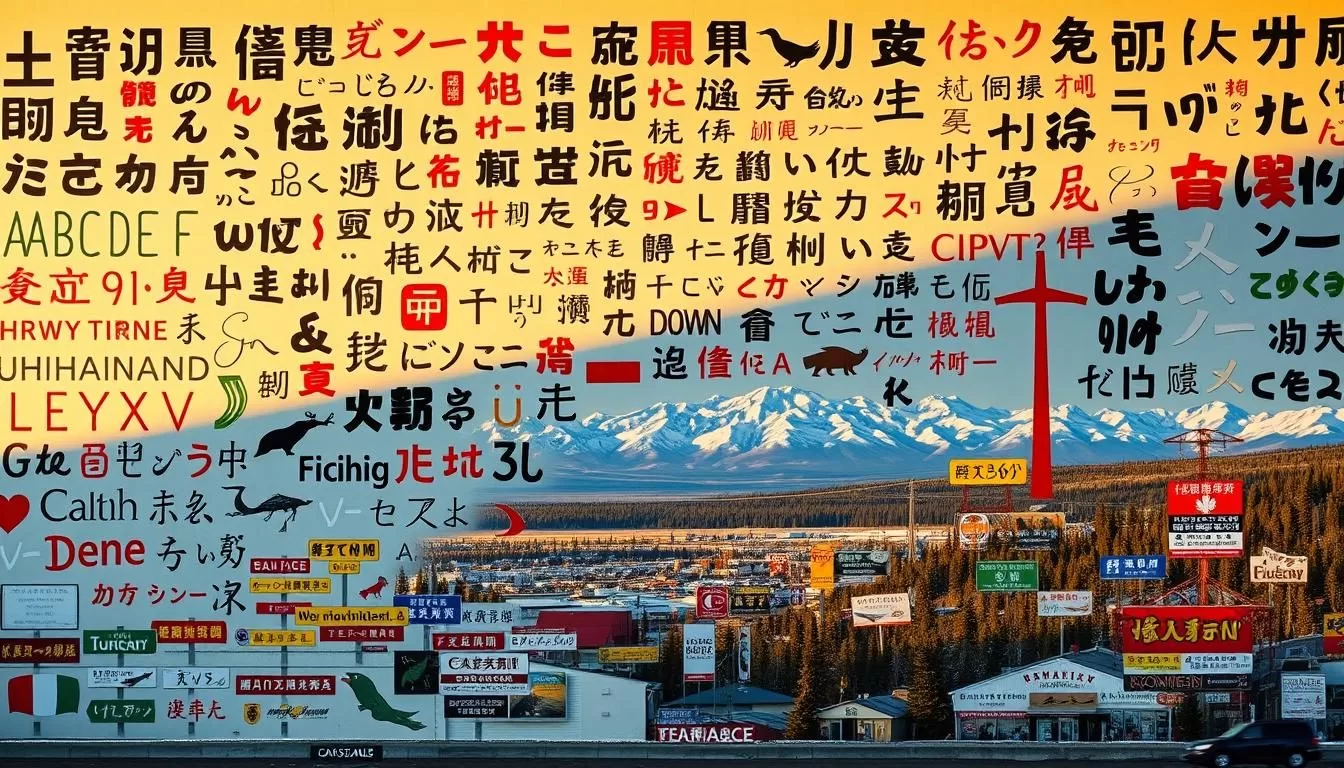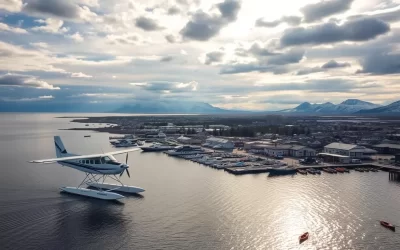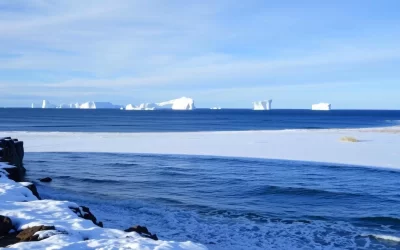You are about to explore a region that stands out in Canada for its linguistic diversity. The Northwest Territories is the only jurisdiction that officially recognizes nine Aboriginal languages alongside English and French.
This unique linguistic landscape reflects the rich cultural heritage of its Indigenous peoples and settler communities. The territory’s commitment to preserving its languages is evident through its comprehensive Official Languages Act, which provides a framework for language rights and services.
As you delve into the languages spoken across this vast northern territory, you’ll gain insight into the region’s history, cultural development, and contemporary social dynamics. The diverse population contributes to a complex tapestry of languages, from Dene languages in the south to Inuit languages along the Arctic coast.
The Linguistic Landscape of Northwest Territories
As you explore the Northwest Territories, you’ll discover a rich tapestry of languages that reflect the region’s diverse population and history. The territory is home to eleven official languages, a testament to its complex linguistic landscape.
A Territory of Multilingual Diversity
The Northwest Territories is characterized by a unique multilingual diversity, with nine of its eleven official languages being Aboriginal. These languages belong to three different language families: Dene, Inuit, and Algonquian/Cree.
The NWT Official Languages Act recognizes eleven languages: Chipewyan (Dëne Sųłıné Yatıé), Cree (Nēhiyawēwin), English, French, Gwich’in, Inuinnaqtun, Inuktitut, Inuvialuktun, North Slavey (Sahtúǫt’ı̨ne Yatı̨́), South Slavey (Dene Zhatıé), and Tłı̨chǫ.
Historical Context of Language Development
The linguistic landscape of the Northwest Territories has been shaped by thousands of years of Indigenous presence, followed by European contact, colonization, and more recent immigration patterns.
Historical trading relationships between different Indigenous groups created natural language contact zones, establishing a tradition of multilingualism that continues today.
The fur trade era introduced new languages and pidgins to the region, while later government policies, including the residential school system, severely impacted Indigenous language transmission.
| Language Family | Languages | Population Spoken |
|---|---|---|
| Dene | Chipewyan, North Slavey, South Slavey, Gwich’in, Tłı̨chǫ | Significant portion of Indigenous population |
| Inuit | Inuinnaqtun, Inuktitut, Inuvialuktun | Predominant in Inuit communities |
| Algonquian/Cree | Cree | Present in specific communities |
| European | English, French | Widespread, used in government and public services |
Understanding this historical context helps you appreciate why language preservation is not just about communication but about maintaining cultural continuity and healing historical wounds.
The Official Languages Act of Northwest Territories
As you delve into the language laws of the Northwest Territories, you’ll find the Official Languages Act to be a pivotal piece of legislation.
Legislative Framework and Recognition
The Northwest Territories (NWT) Official Languages Act is the legislative basis for recognizing the NWT’s 11 official languages. This Act commits the Government of the Northwest Territories (GNWT) to providing territorial services in the official languages. The establishment of the Office of the NWT Languages Commissioner and the Official Languages Board are key components of this framework, ensuring the delivery of services and the revitalization of languages.
| Institution | Role |
|---|---|
| Office of the NWT Languages Commissioner | Investigates complaints under the Act |
| Official Languages Board | Assists in service delivery and language revitalization |
| GNWT | Provides territorial services in official languages |
Evolution of Language Rights
The evolution of language rights in the Northwest Territories reflects broader Canadian developments in Indigenous rights recognition. Significant amendments to the Act in 1990 and 2003 underscore this evolution. The Act not only recognizes the official status of languages but also creates obligations for government institutions, thereby shaping the linguistic landscape.
Northwest Territories, Canada: Official and widely spoken languages
As you delve into the linguistic landscape of Northwest Territories, Canada, you’ll discover an impressive array of eleven official languages. This diversity is a reflection of the territory’s rich cultural heritage and its commitment to preserving the languages of its indigenous peoples and official languages.
The Eleven Official Languages
The Northwest Territories Official Languages Act recognizes eleven languages, which are: Chipewyan (Dëne Sųłıné Yatıé), Cree (Nēhiyawēwin), English, French, Gwich’in, Inuinnaqtun, Inuktitut, Inuvialuktun, North Slavey (Sahtúǫt’ı̨ne Yatı̨́), South Slavey (Dene Zhatıé), and Tłı̨chǫ. These languages belong to four distinct language families: Dene, Inuit, Algonquian, and Indo-European.
Language Families in the Northwest Territories
| Language Family | Languages | Number of Languages |
|---|---|---|
| Dene | Chipewyan, Gwich’in, North Slavey, South Slavey, Tłı̨chǫ | 5 |
| Inuit | Inuinnaqtun, Inuktitut, Inuvialuktun | 3 |
| Algonquian | Cree | 1 |
| Indo-European | English, French | 2 |
Language Distribution Across Communities
The distribution of these languages across communities is influenced by historical settlement patterns and contemporary demographic trends. English is widely used as a lingua franca, while indigenous languages are strongly maintained in smaller, more remote communities where they are closely tied to traditional activities and cultural practices.
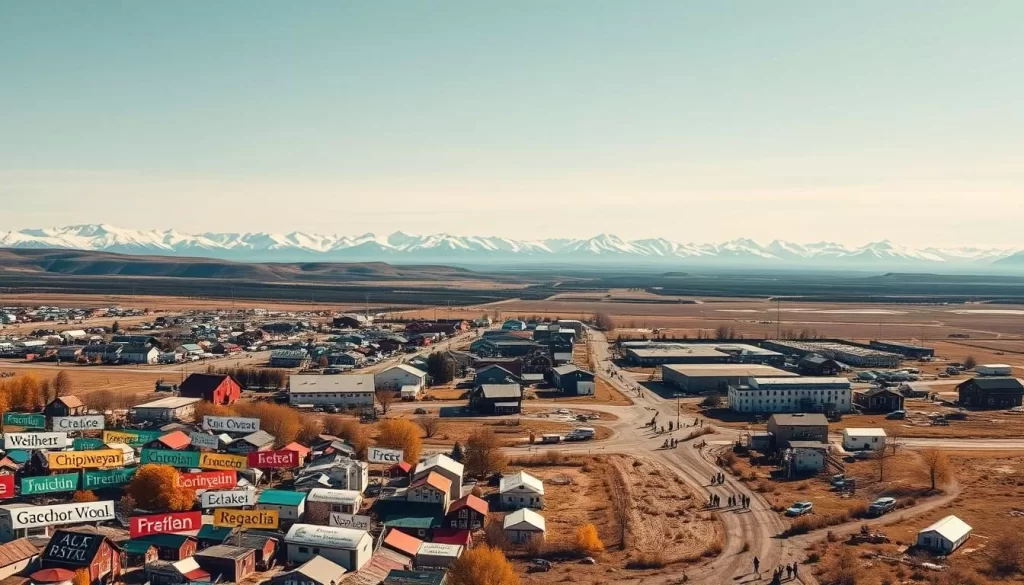
Understanding the distribution of languages helps appreciate the need for flexible language policies that can address the diverse needs of communities across the Northwest Territories. The territory’s commitment to linguistic diversity is evident in its recognition of eleven official languages, reflecting its dedication to preserving the cultural heritage of its population.
The Five Dene Languages
You can explore the diverse linguistic landscape of the Northwest Territories through its five distinct Dene languages. These languages are not only a vital part of the region’s cultural heritage but also play a significant role in the identity of the communities that speak them.
Chipewyan (Dëne Sųłıné Yatıé)
Chipewyan, or Dëne Sųłıné Yatıé, is spoken in several southeastern communities of the Northwest Territories, including Łutselk’e, Fort Resolution, Hay River, Fort Smith, and Detah. This language is part of a broader linguistic network that extends into northern Alberta, Saskatchewan, and Manitoba, highlighting the historical connections between these regions.
Gwich’in
Gwich’in is primarily spoken in the Mackenzie Delta region, with communities in Aklavik, Inuvik, Tsiigehtchic, and Fort McPherson being key locations. The language has significant connections to Gwich’in communities in Yukon and Alaska, forming a transnational language community that transcends territorial boundaries.
North Slavey (Sahtúǫt’ı̨ne Yatı̨́)
North Slavey, or Sahtúǫt’ı̨ne Yatı̨́, is spoken along the central Mackenzie River and around Great Bear Lake, with distinct regional dialects found in communities such as Colville Lake, Fort Good Hope, Norman Wells, Tulit’a, and Délı̨ne. The language is an integral part of the cultural identity of these communities.
South Slavey (Dene Zhatıé)
South Slavey, or Dene Zhatıé, is spoken in communities along the Mackenzie River valley and into the southwestern portion of the Northwest Territories. Communities such as Sambaa K’e, Fort Liard, Nahanni Butte, Kakisa, Fort Providence, Jean Marie River, Wrigley, and Fort Simpson are home to South Slavey speakers, with variations in the language observed between these communities.
Tłı̨chǫ
Tłı̨chǫ, formerly known as Dogrib, is spoken in a relatively compact geographical area between Great Slave Lake and Great Bear Lake. The language benefits from a self-government agreement that has strengthened language initiatives, supporting its preservation and promotion in communities such as Gamètı̀, Wekweètı̀, Whatı̀, Behchokǫ̀, and Wıìlıìdeh.
The five Dene languages are a testament to the rich linguistic diversity of the Northwest Territories, with each language contributing to the cultural mosaic of the region. Efforts to preserve and promote these languages are crucial for maintaining the cultural heritage of the aboriginal communities and ensuring their continued use in daily life.
The Three Inuit Languages
The three Inuit languages of the Northwest Territories – Inuvialuktun, Inuinnaqtun, and Inuktitut – are a testament to the region’s rich linguistic diversity and its connection to the broader Inuit culture across the Arctic. These languages are not only vital to the local communities but also represent the western extent of a language continuum that stretches across the Canadian Arctic to Greenland.
Inuvialuktun
Inuvialuktun is a collective term for three dialects: Uummarmiutun, Siglitun, and Kangiryuarmiutun, spoken in the Inuvialuit Settlement Region along the Arctic coast. It is primarily spoken in Sachs Harbour, Paulatuk, Tuktoyaktuk, Aklavik, and Inuvik. The language is an essential part of the cultural identity of the Inuvialuit people, and efforts are being made to preserve it through language preservation programs developed by the Inuvialuit Regional Corporation.
Inuinnaqtun
Inuinnaqtun is primarily spoken in Ulukhaktok (formerly Holman) and shares features with the Copper Inuit dialect spoken in the neighboring territory of Nunavut. This language is crucial to the cultural heritage of the people in Ulukhaktok, and its preservation is supported by community-based language programs.
Inuktitut
Inuktitut speakers in the Northwest Territories often represent more recent migration from Nunavut and other eastern Arctic regions to urban centers like Yellowknife. Despite the challenges faced by Inuktitut due to smaller speaker populations, it benefits from its connection to the larger Inuit language communities across the Arctic, supporting its preservation and revitalization.
The three Inuit languages face significant challenges due to historical pressures and smaller speaker populations. However, they are supported by various language preservation programs and community efforts, ensuring their continued relevance and importance within the Northwest Territories’ linguistic landscape.
Cree (Nēhiyawēwin) in the Northwest Territories
Cree (Nēhiyawēwin), the sole Algonquian language in the Northwest Territories, holds a distinct place among its official languages. You might be interested to know that this language is primarily spoken in the southern parts of the territory, particularly in the Fort Smith and Hay River areas.
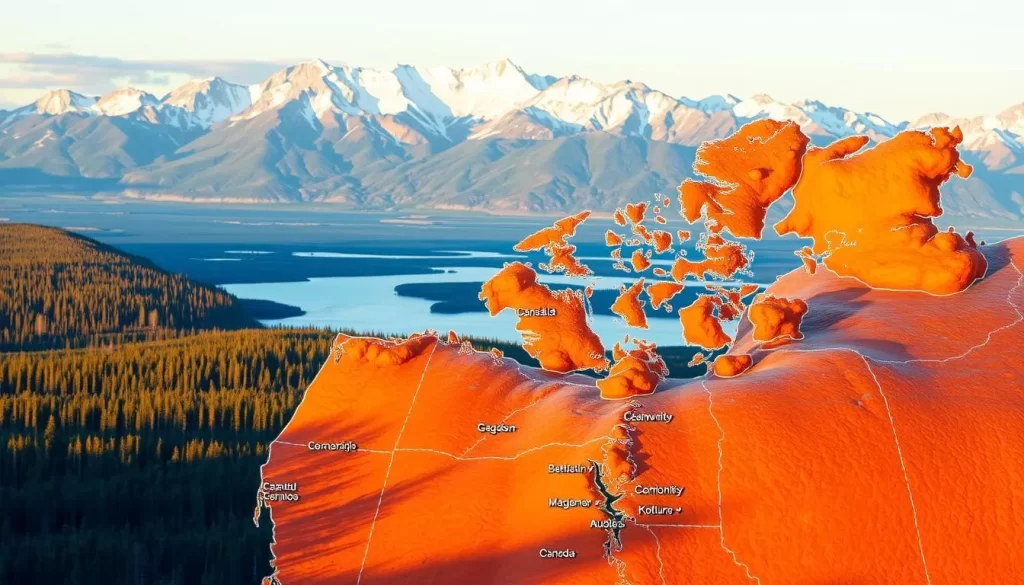
Distribution and Usage
The distribution of Cree speakers is largely concentrated in the southern communities of Fort Smith and Hay River, reflecting historical migration patterns from the Prairie provinces. As a result, the Cree language in the Northwest Territories represents the northernmost extension of a larger language community that spans across Canada’s boreal forest region. You can observe that the dialect spoken here is primarily Woods Cree, influenced by neighboring Plains Cree communities.
Cultural Significance
Despite having fewer speakers compared to neighboring provinces like Alberta and Saskatchewan, Cree maintains significant cultural importance. It serves as a vital connection to broader Indigenous networks and aboriginal languages. The language benefits from resources developed by larger Cree communities in southern Canada, though adapting these resources to northern contexts remains crucial for its preservation.
English and French: The Indo-European Languages
You might be surprised to learn that English and French play crucial roles in the Northwest Territories, despite not being indigenous to the region. As you explore the territory’s linguistic landscape, you’ll discover that these two Indo-European languages have become integral to its identity.
English Language Usage and Distribution
English is the primary language used in government, business, and education throughout most of the Northwest Territories. Nearly 90% of the population can speak English, making it a dominant force in the territory’s linguistic landscape. The English spoken in the Northwest Territories has some distinctive northern Canadian features, although regional variations are less pronounced compared to southern Canada.
You’ll find that English is widely spoken in the capital city, regional centers, and communities, serving as a common language for communication among the diverse population.
French Language Communities
While less prevalent than English, French still maintains a significant presence in the Northwest Territories. Approximately 3% of the population claims French as their first language, with concentrations in larger centers like Yellowknife, Inuvik, Hay River, and Fort Smith.
The French language community has established strong institutional support, including organizations like the Fédération franco-ténoise and French-language schools in major centers. Both English and French benefit from their official status at the territorial and federal levels, receiving significant resources for service provision and education.
Language Demographics and Statistics
You can gain a deeper understanding of the Northwest Territories by examining the distribution and trends of its languages. The territory is characterized by a diverse linguistic landscape, with a mix of official and Indigenous languages.
Population Distribution by Language
The population distribution by language in the Northwest Territories is complex. According to recent census data, approximately 77% of the territorial population speaks English as their primary home language, while Indigenous languages and French account for the remainder. The distribution varies significantly between urban centers and smaller communities. In smaller, more remote settlements, Indigenous languages maintain a stronger presence.
- English is the dominant language in urban areas.
- Indigenous languages are more prevalent in smaller communities.
- French is spoken by a smaller percentage of the population.
Language Trends and Changes
Concerning trends show declining numbers of Indigenous language speakers, particularly among younger generations, though some languages like Tłı̨chǫ show greater resilience. Intergenerational transmission rates vary significantly between language communities. Migration patterns continue to influence language demographics, with resource development projects and government employment drawing English and French speakers to the territory.
- Declining Indigenous language speakers among younger generations.
- Variation in intergenerational transmission rates.
- Migration influences language demographics.
Bilingualism in the Northwest Territories
You will find that bilingualism in the Northwest Territories is characterized by a diverse range of linguistic combinations, creating a complex linguistic environment unlike other Canadian jurisdictions.
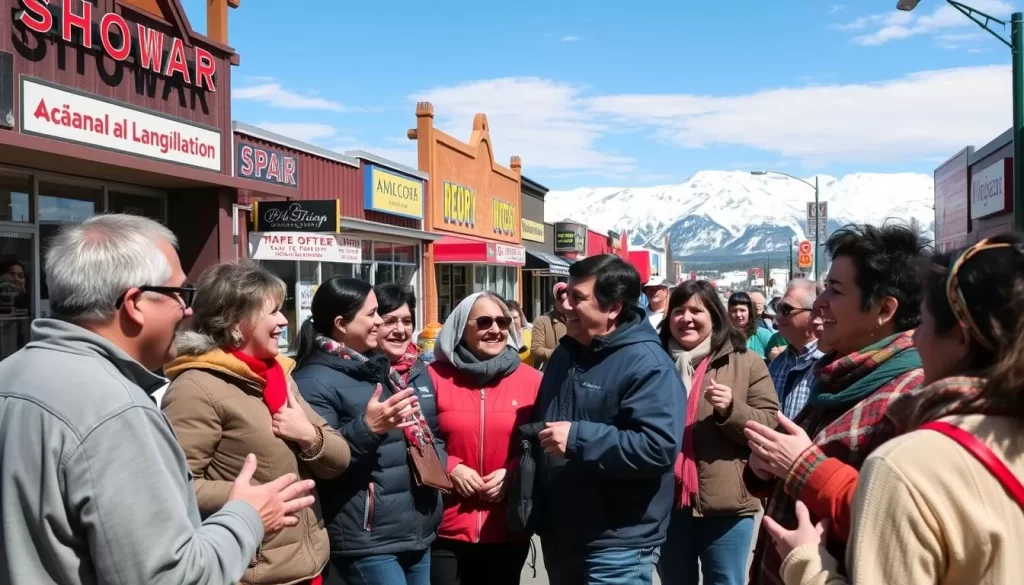
Bilingualism here is not limited to a single language pair; instead, it encompasses various combinations, including English-French and Indigenous languages with official languages.
English-French Bilingualism
English-French bilingualism, promoted through federal policies, is present in the Northwest Territories but remains relatively limited, at around 10% of the territorial population. This form of bilingualism is primarily concentrated in government and service sectors where both English and French are utilized.
The prevalence of English-French bilingualism is significantly influenced by federal language policies, which have a broader impact across Canada, particularly in regions like Quebec, where 94.3% of the population has knowledge of French.
Indigenous-Official Language Bilingualism
More common in the Northwest Territories is bilingualism between English and an Indigenous language, particularly in smaller communities where traditional languages maintain a stronger presence.
The pattern of bilingualism often follows generational lines, with elders more likely to be fluent in an Indigenous language with some English knowledge, while younger generations tend toward English dominance with varying degrees of Indigenous language ability.
Language Services and Government Support
As you explore the Northwest Territories, you’ll discover a complex system supporting its official languages. The territorial government is committed to providing services in all eleven official languages, though the implementation varies based on “significant demand” provisions and practical considerations.
Public Services in Official Languages
The Northwest Territories government offers various services in its official languages, ensuring that residents can access essential information and services. This includes government websites, public documents, and customer service support.
A key aspect of language services is the provision of translation and interpretation support. This enables residents to engage with government services in their preferred language, facilitating better communication and understanding.
| Language | Service Type | Availability |
|---|---|---|
| English, French | Government Websites, Public Documents | All Communities |
| Indigenous Languages | Interpretation, Translation | Traditional Language Territories |
| Inuktitut, Inuinnaqtun, Inuvialuktun | Community Services, Public Documents | Inuit Communities |
Communities with “Significant Demand”
Four communities in the Northwest Territories are designated as having “significant demand” for French language services: Yellowknife, Hay River, Fort Smith, and Inuvik. These communities receive enhanced French language services, including government services and public information.
The Government of Canada provides substantial funding for French language services through bilateral agreements. For Indigenous languages, services are more closely tied to traditional language territories, with support available in the languages historically associated with specific regions.
The Role of the Languages Commissioner
As you explore the linguistic landscape of Northwest Territories, you’ll discover the pivotal role of the Languages Commissioner. The Languages Commissioner is an officer of the Legislative Assembly, responsible for ensuring the recognition of the rights, status, and privileges of each of the territory’s official languages.
Responsibilities and Authority
The Commissioner’s role involves investigating complaints regarding language rights violations and monitoring compliance with the Official Languages Act. With the authority to investigate, report on findings, and make recommendations to government bodies, the Commissioner plays a crucial oversight role in the Northwest Territories’ language rights framework. This includes ensuring that territorial public services are provided in official languages.
Impact on Language Preservation
By advocating for language rights awareness and promoting understanding of language obligations, the Commissioner contributes significantly to the preservation of the territory’s linguistic diversity. The Commissioner’s annual reports provide valuable information on systemic issues affecting language rights implementation, helping to inform future initiatives and ensure the continued vitality of the territory’s official languages and the status of these languages.
The Official Languages Board
You can see the impact of the Official Languages Board on language preservation efforts across the territory. The Board serves as a vital link between the language communities and government policy development in the Northwest Territories.
Structure and Representation
The Official Languages Board’s structure ensures representation from all eleven official language communities. Members are recommended by their respective Indigenous governments and community organizations, typically serving four-year terms. This representation brings community perspectives to territorial language planning, grounding policy decisions in the realities of language users. 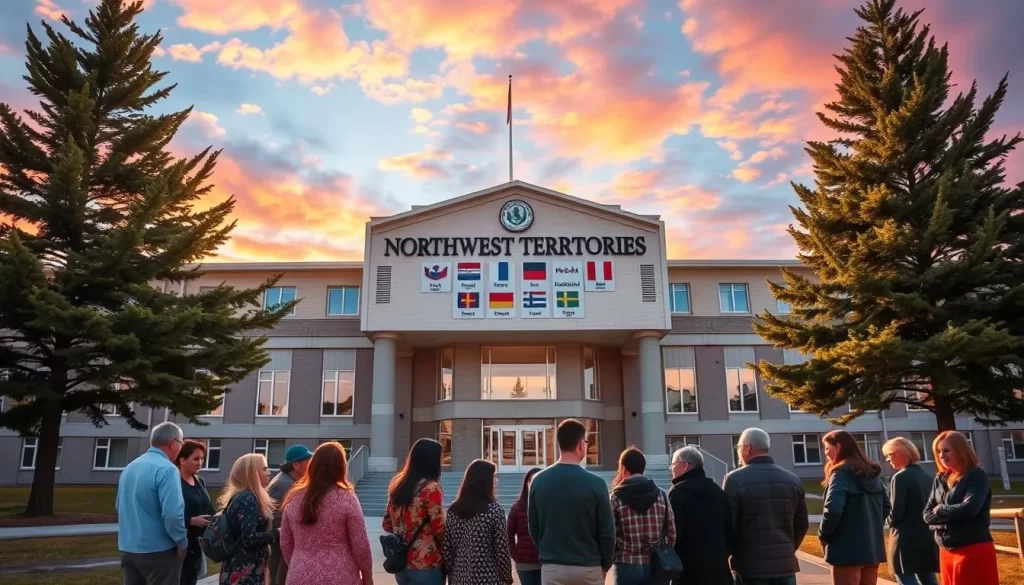
Advisory Role to the Minister
The Board advises the Minister Responsible for Official Languages on three key areas: promoting language rights, delivering public services in official languages, and revitalizing Indigenous languages. Although the Board lacks decision-making authority, its recommendations significantly influence language policy directions and resource allocation. The collaborative approach of the Board balances government authority with community autonomy in language planning, ensuring that the needs of the language community are met.
Language Preservation and Revitalization Efforts
You can observe a comprehensive approach to language preservation in the Northwest Territories, involving government initiatives, community programs, and educational approaches. This multi-faceted strategy is crucial for maintaining the rich linguistic diversity of the region.
Government Initiatives
The Government of Northwest Territories (GNWT) and the federal government have collaborated on the Canada-NWT Agreement on Indigenous Languages, providing approximately $5.9 million annually for Indigenous language programs and services. The GNWT’s Indigenous Languages and Education Secretariat plays a pivotal role in coordinating policy development and program implementation across departments.
Community-Based Programs
Community-based initiatives are at the forefront of language revitalization. Programs such as language nests for early childhood immersion, master-apprentice programs, and land-based language camps have shown significant promise. These community-driven efforts are crucial for engaging younger generations and ensuring the continued relevance of Indigenous languages.
Educational Approaches
Educational strategies have evolved, with a shift towards Indigenous language immersion programs in several communities. While implementation varies, this approach has the potential to significantly enhance language proficiency among younger populations. Additionally, digital technologies are being leveraged to develop language learning apps, online dictionaries, and social media content, further supporting language preservation efforts.
The Future of Languages in Northwest Territories
The future of languages in the Northwest Territories is a multifaceted issue, filled with both challenges and opportunities. As you explore this complex landscape, you’ll find that demographic trends suggest continued pressure on Indigenous languages as urbanization increases and English dominance in education, media, and employment persists.
However, there are also promising developments. Technological innovations offer new platforms for language documentation, learning, and revitalization. Several communities are developing digital resources tailored to younger generations, which could help to strengthen language transmission.
- Self-government agreements and Indigenous governance structures provide frameworks for language authority to be returned to communities.
- The implementation of the federal Indigenous Languages Act may create new funding streams and support mechanisms.
- Effective partnerships between government institutions, Indigenous organizations, and community-led initiatives will be crucial to success.
The Government of the Northwest Territories (GNWT) has been encouraging Indigenous governments to pursue federal funding streams once their funding models have been established. For instance, the Assembly of First Nations is expected to complete and approve their funding model, potentially unlocking new resources for language preservation and promotion.
As you consider the future, it’s clear that the path forward will depend on balancing the needs of different language communities, including English and French, while supporting the rich linguistic diversity of the region. With a population that values its linguistic heritage, the Northwest Territories can work towards a future where multiple languages coexist and thrive.
Conclusion
The Northwest Territories present a fascinating case of linguistic diversity, with eleven official languages that reflect the territory’s Indigenous heritage and colonial history. As you’ve explored this unique Canadian jurisdiction, it’s become clear that the Official Languages Act plays a crucial role in recognizing and preserving the Aboriginal languages alongside English and French.
The territory’s approach to language policy is ambitious, yet it faces practical challenges in implementing multilingual services across a vast and sparsely populated region. The status of languages continues to evolve, influenced by demographic changes, government policies, and community initiatives. While English remains dominant, the resilience of Indigenous language communities offers hope for their continued vitality.
The Northwest Territories’ experience provides valuable lessons for language policy elsewhere, highlighting both the possibilities and limitations of legislative approaches to language preservation. It’s essential to remember that behind the statistics and policies are communities of speakers for whom these languages are fundamental expressions of identity, knowledge systems, and relationships to land.
As you consider the future of languages in this northern region, it’s clear that the preservation, development, and enhancement of Aboriginal languages are crucial. The Official Languages Act is a significant step towards this goal, but ongoing efforts from both government and community are necessary to ensure the continued vitality of these languages.
In conclusion, the Northwest Territories’ linguistic diversity is a rich resource that requires continued support and recognition. By understanding the complexities of language use and policy in this region, we can better appreciate the importance of linguistic diversity and the challenges of preserving it.
The above is subject to change.
Check back often to TRAVEL.COM for the latest travel tips and deals.
